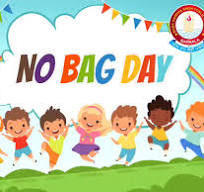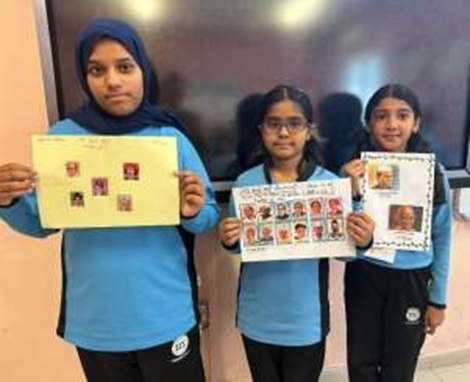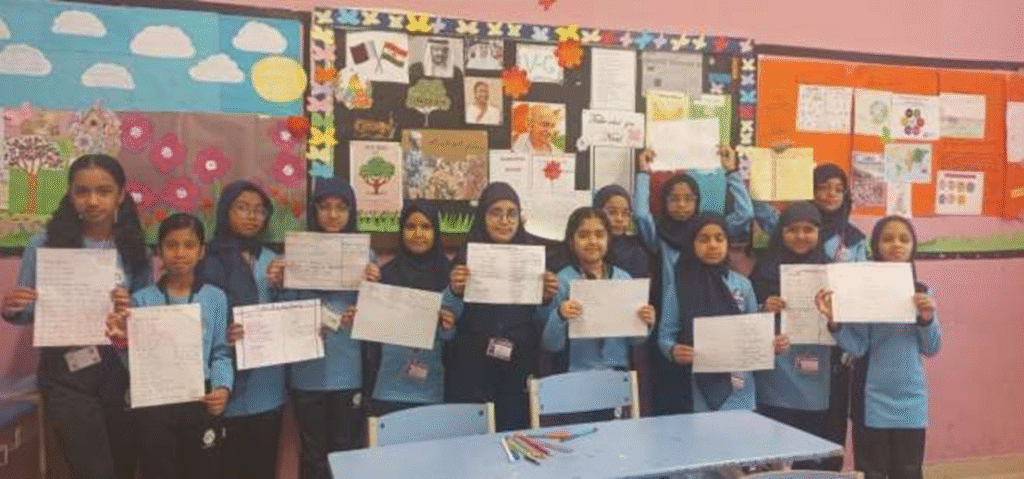NO BAG DAY (11.05.2025)Girls’s section
To break the monotony of traditional classroom learning and enhance student engagement through
activity-based education, Ideal Indian School conducted a No Bag Day on 11th May 2025 for the Girls’
Section. The aim was to promote experiential learning, creativity, collaboration, and core value
development through carefully curated hands-on and brain-stimulating activities.
In English period students were given thought-provoking images from daily life. From these images,
they wrote original stories, focusing on plot, character development, and descriptive language. The best

entries were shared aloud in class, followed by peer feedback sessions. Teachers emphasized figurative
language and narrative structure. This activity sharpened writing skills and instilled literary creativity.
Using eco-friendly modeling clay and art materials, students crafted life-sized models of a dicot seed,
accurately highlighting components in Science period. The models were mounted on labelled sheets
with definitions and functions. Teachers organized a quiz session based on the models, reinforcing
concepts. The tactile nature of this activity enabled kinesthetic learning and deeper retention of
scientific concepts.
In this fun-filled math activity, students created large numbers using shuffled number cards. They then
partnered with classmates to perform complex addition and subtraction operations. The activities
improved mental calculation speed and built teamwork skills while dissolving fear associated with
large number operations.
In Social Science period students delved into India’s freedom movement, researching notable freedom
fighters such as Mahatma Gandhi, Sarojini Naidu, Bal Gangadhar Tilak, Subhash Chandra Bose, and
others. Each student created an individual album using A4 sheets, incorporating neatly cut and labeled
images along with well-researched facts and anecdotes. The albums showcased timelines, slogans used in the independence movement, and personal reflections.

The activity not only enriched their historical
knowledge but also connected them emotionally to the sacrifices of the nation’s heroes.
In Qatar History period, students illustrated the journey of Qatar’s development post the discovery of
oil through dynamic charts and models. Maps, photographs of oil rigs, and statistical data were
incorporated to bring depth to the presentations. Arabic-medium students executed the same task in
Arabic, promoting bilingual competence. The charts were presented in a gallery walk format, where
students explained their work to peers, thereby encouraging knowledge sharing and oratory skills. The
session concluded with a teacher-led discussion on Qatar’s economic diversification and current Vision
2030 goals.

In Islamic Studies Arabic students practiced Islamic calligraphy by transcribing Hadiths on decorative
sheets and designing Islamic art motifs around them. Teachers emphasized the spiritual importance and
etiquette of writing sacred text. Non-Arab students created visual charts explaining the six beliefs in
Islam—belief in Allah, angels, books, messengers, the Day of Judgment, and divine decree. Teachers
facilitated reflective discussions linking these beliefs to daily behavior.









